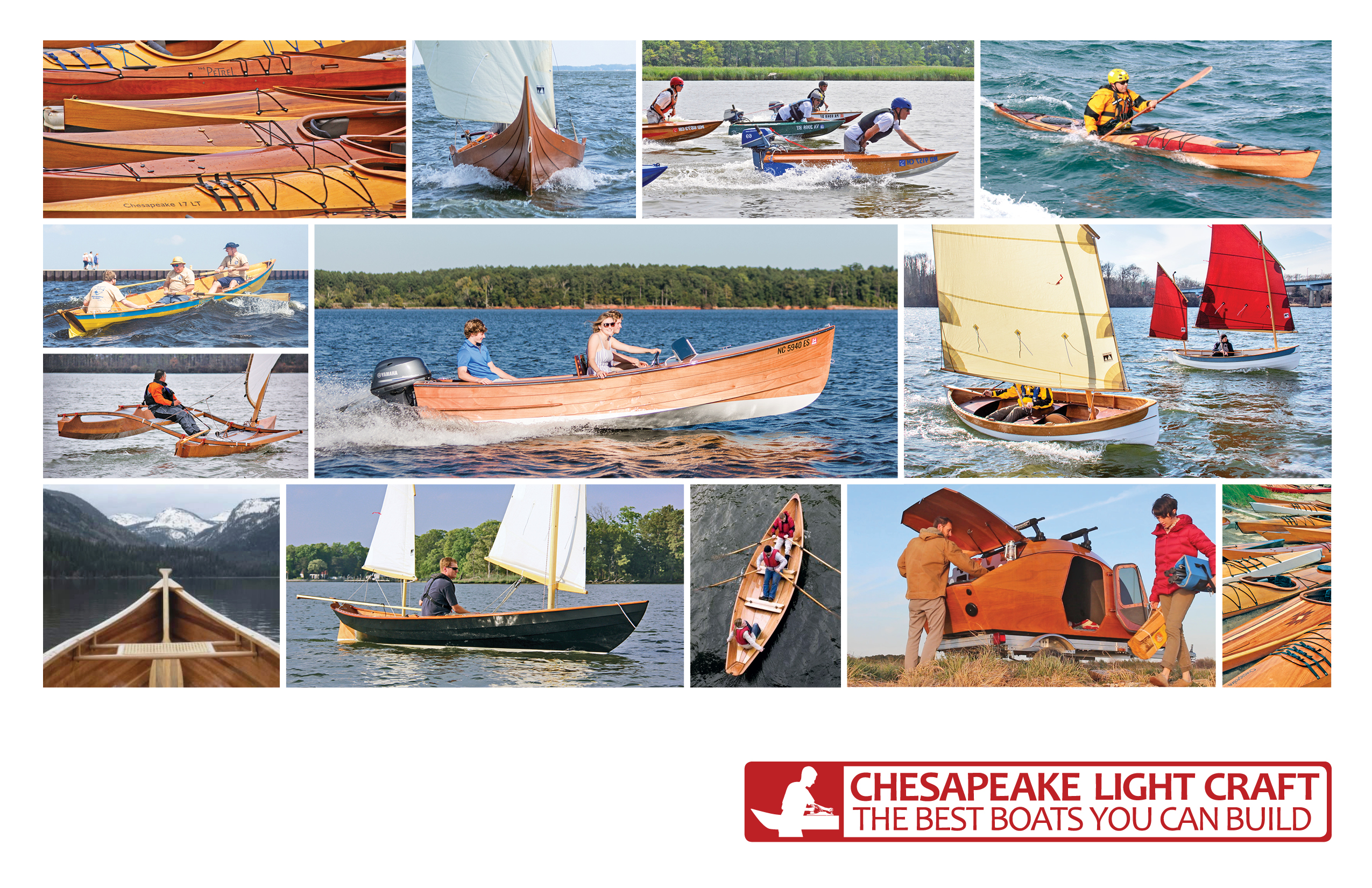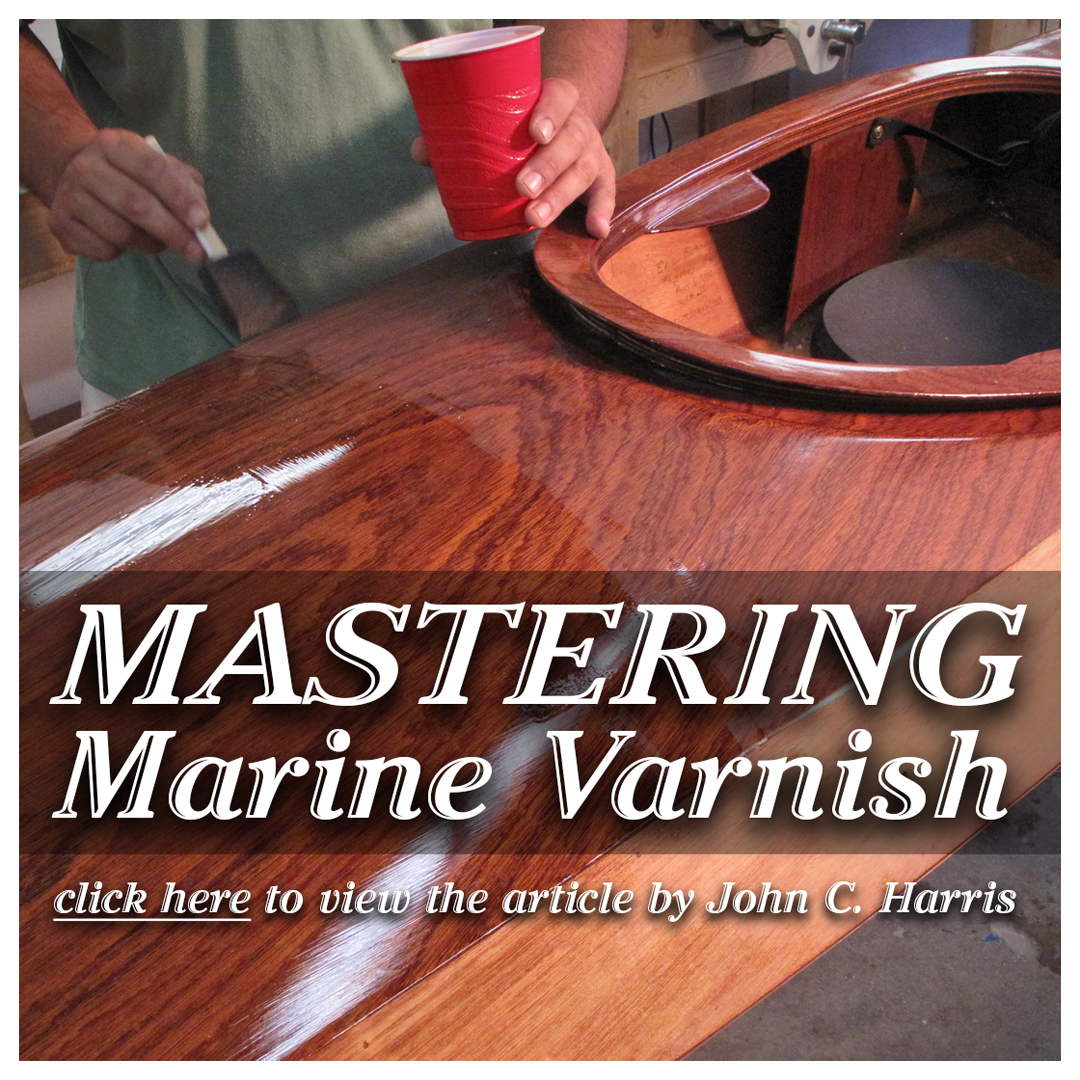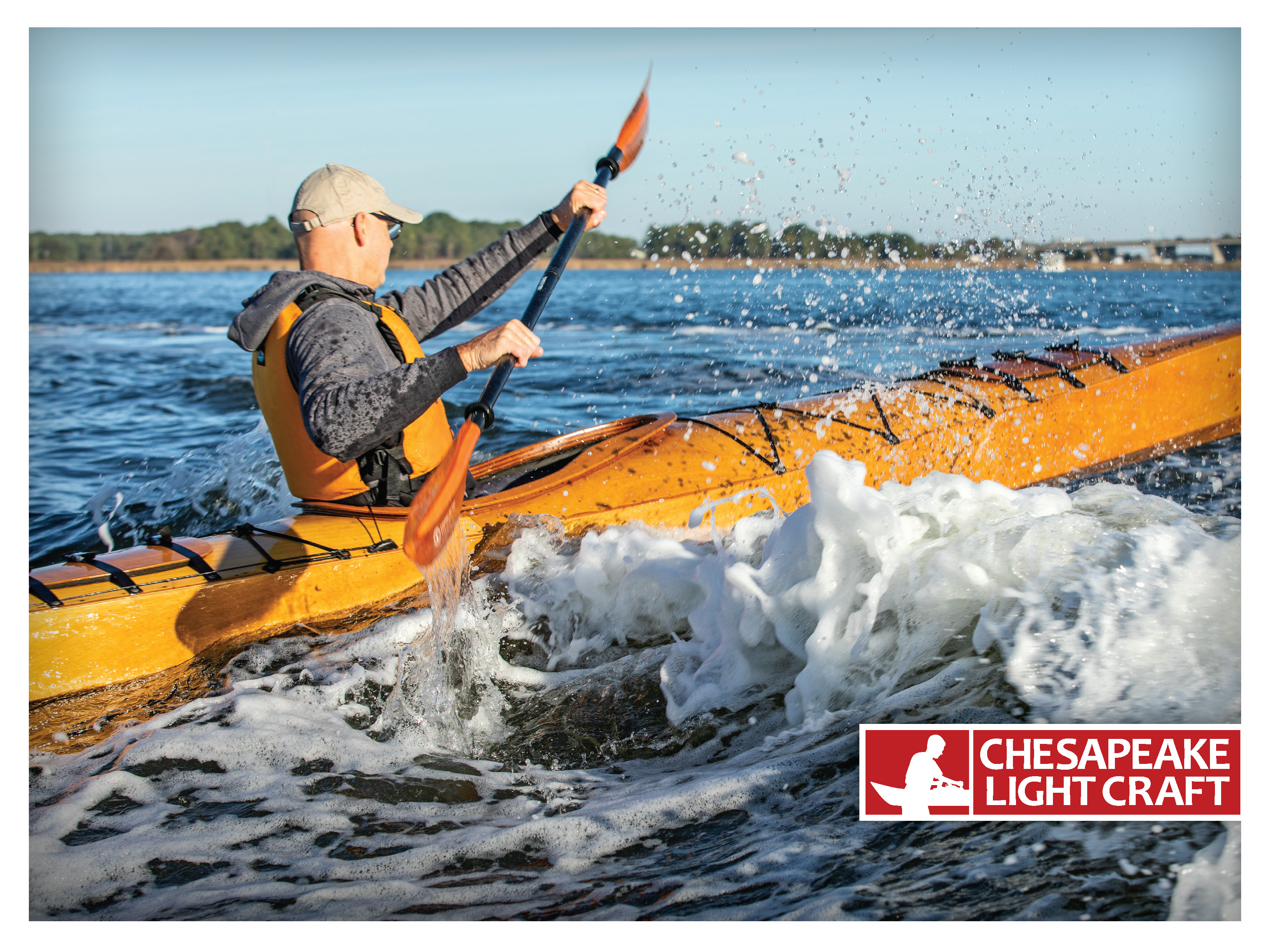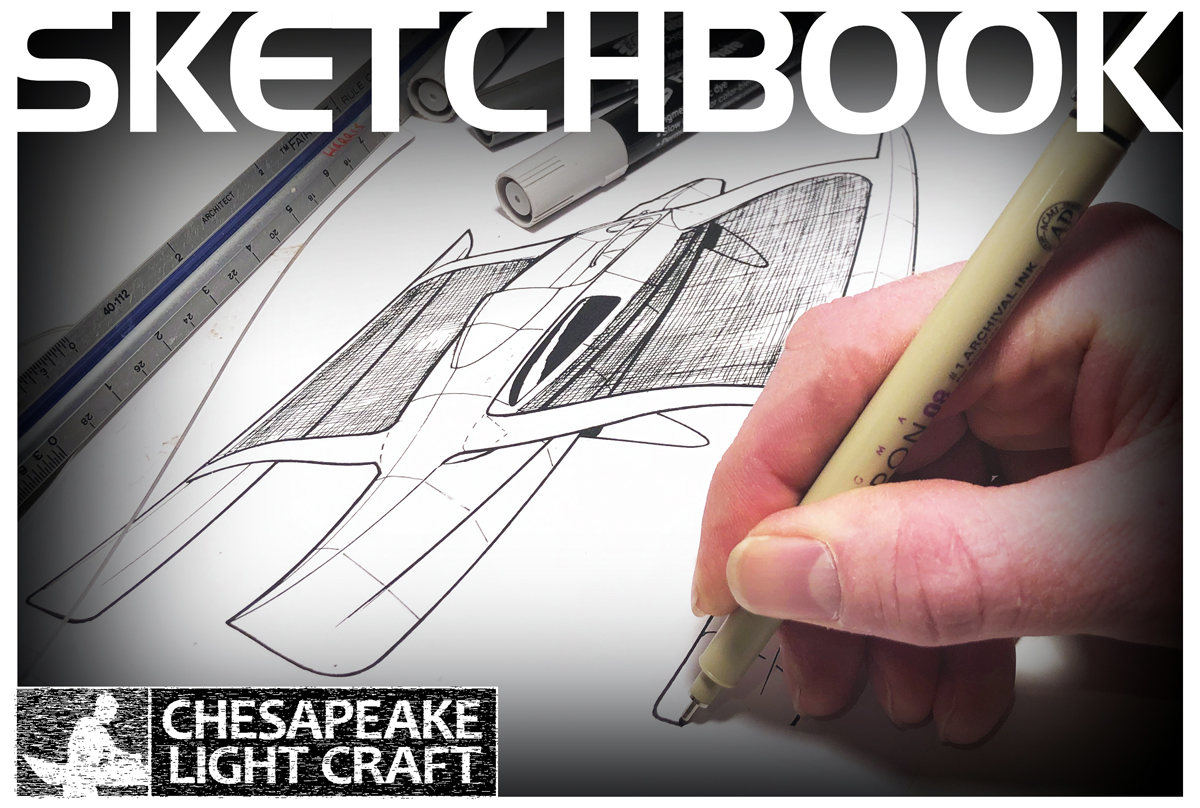Builders' Forum |
|
| ↓ Scroll to Last Comment ↓ | Forum Guidelines | Builders' Forum | |
Passagemaker & Eastport Pram - Cutting the Boat in Half
On another thread, a very interesting technique popped up for cutting the boat in half if you're making the Take-Apart PM or the Nesting EP. The conversation started with discussing the possibility of making some rigging videos and another poster requested a video of cutting the boat in half. In the interest of posterity, here's the discussion:
"As far as cutting apart the ENP, I found drilling a series of 1/8" holes through the cardboard using a long bit (as the manual suggests for the faint-hearted among us) worked very well. The resulting line of holes makes for an easy guide for sawing, and helps manage one's anxiety."
"The Passagemaker manual does not include that trick. Do you do it before installing the seat? Is there a way to center the drill tip in the cardboard gap?"
"I'm building an ENP which is sawn in half during the construction, the "gap" having been previously occupied by a sacrificial sheet of cardboard at the junction between forward and aft halves. I am completely unfamiliar with the Passagemaker build, but if it's also to be sawn in half and a cardboard spacer is involved at the joint, I imagine the process is similar. (However, I don't know what the appropriate sequencing would be with respect to "installing the seat.")
"In my case, with the ENP hull right-side up and on saw horses, I used a 1/8" drill bit ("Irwin" brand, 12" long, sold in local hardware stores) to drill a series of holes down through the cardboard and out through the hull. The weight of the hand-held drill was sufficient to push the spinning bit down through the channels in the cardboard. I kept the bit vertical (more to avoid bending the bit than drilling through a bulkhead), but I knew that as long as the bit met no resistance until it had penetrated to the hull bottom, I was still within the sacrificial cardboard layer. I drilled enough holes so that when the hull was turned over for sawing, the line to be sawn was obvious. Actually making the cut was still anxiety-provoking, but the holes assured that I cut in the correct plane."
I know CLC probably has zero interest in revisiting any of these manuals, but I would think it would be easy to insert some sort of addendum into the manuals describing the above technique as they're shipped.
I can honestly say that fear of cutting my PMD in half was a very large factor in not making the take-apart version. Also the fact that the additional bulkhead meant buying another sheet of okoume, which I wasn't in a position to do at the time.
Anyway, the purpose of this "re-post" is to facilitate future builders being able to search for this kind of info on the forum here, especially since PMDBuilders.net is defunct.
5 replies:
RE: Passagemaker & Eastport Pram - Cutting the Boat in Half
Skully wrote "I know CLC probably has zero interest in revisiting any of these manuals,"
Actually, CLC revises their manuals as needed, based on customer input and their own assessment of the builder experience. For example, my WD12 manual from 11 years ago looks quite different from the one being currently shipped with the kits and plans. There are extra steps to make the assembly easier, among other things.
It's a good idea not to make business-related statements on behalf of CLC unless they're based in fact rather than speculation.
Laszlo
RE: Passagemaker & Eastport Pram - Cutting the Boat in Half
I wasn't speaking for CLC, and I used the word "probably". I was referring to John's numerous comments on the challenge of producing the manuals for their boats.
I'm glad to be proven wrong if they really do update manuals. Mine definitely have a 10 year old and "done, moving along" feel. I'm fine with that as long as the supplemental info is easily found on this forum, hence my post.
RE: Passagemaker & Eastport Pram - Cutting the Boat in Half
Maybe I can allay the fears of people who are considering the ENP. I just finished mine, built from plans, and I love it. The entire time that I was building it, I worried about the day that I'd have to cut it. As it turned out, it was a 15-20 minute job that was easy as could be. I followed the above advice about drilling numerous holes down through the cardboard. I then held my breath, put a nice new blade in my jig saw, and slowly cut the boat along the line that I made with the drilled holes. It came apart nicely, no problems at all! Remember, the width of the sacrificial cardboard will allow a small amount of wandering with the saw. I'm no expert, but I managed to cut the boat in half without hitting the bulkheads. An if you do cut into the bulkheads, you need to remember that when the boat is bolted together, nobody will see it, especially if the mistake is on the side that will be covered by the neoprene gasket. The cutting of the ENP, in my experience, is much ado about nothing.
Hope this helps.
Sean.
RE: Passagemaker & Eastport Pram - Cutting the Boat in Half
"...drilling down through the cardboard...." So, this is done with the bulkheads epoxied in place by using a very long drill bit? Would that be practical with a Passagemaker Dinghy? (I think the bulkheads involved are significantly deeper.) Could this be done by marking for the holes prior to epoxying in the bulkeads and then drilling the holes with the bulkheads removed?
Our PMD is long since finished, but I can see that we could have saved ourselves a lot of "separation anxiety" and subsequent filling if we'd had a series of holes to follow.
.....Michael













RE: Passagemaker & Eastport Pram - Cutting the Boat in Half
» Submitted by Birch2 - Sat, 10/13/18 » 5:46 PM
For me, it was just the opposite. I think that the pannicky thrill of cutting my nearly completed Sectional Shearwater Sport apart was a large factor in my decision to try building it!
The drilling trick would not work on the Shearwater, even if I had known about it. And as it happened, I did wander a bit as I sawed the hull apart -- slightly cutting into one of the bulkheads.
But what we all learn as builders is that there is nothing which cannot be fixed on a wooden boat! I used epoxy wood flour putty to build up the damaged bulkhead. Then a lot of elbow grease sanded it back into the shape. The repair is unnoticeable (even with a "bright" finish) and the boat is water tight. All in all, the setback just added to the thrill.